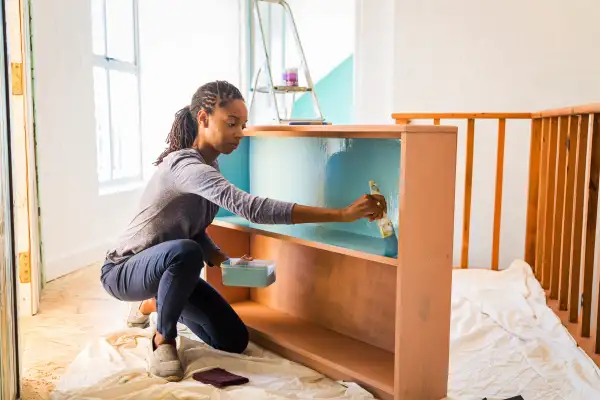Dreaming of a DIY Renovation? How to Remodel Without Hurting Your Pride or Property Value

If you’ve been spending a lot more time at home these days, you may have thought your house could use a little work. If so, you’re in good company.
More than 70% of people polled by Bank of America about shopping habits during coronavirus said they were taking on home improvement projects, with more on tap for 2021. Sales at building material and garden supply stores are up 11% from last year, according to Census Bureau retail sales data through July. Home improvement giants Home Depot and Lowe’s had breakout quarters.
“Homeowners have become far more aware of the eyesores around their house,” says Dan DiClerico, home expert at HomeAdvisor, a home services marketplace. “Also, our homes are subject to a lot more wear and tear when we’re spending more time at home.”
Of course, one way to save money when doing a home renovation is to tackle the project on your own. But there are some steps to take if you want to execute a successful DIY remodel without draining your wallet, damaging your home, or injuring yourself.
Choose the right project
Making an honest assessment of your renovation skills before taking on a home improvement project yourself is crucial, says Jim Molinelli, an architect based in Columbia, Maryland and the author of Remodel! Without Going Bonkers or Broke.
“Unfortunately, I think many people overestimate their home improvement abilities,” he says. “What’s driving that false sense of confidence is home remodeling TV shows. We watch first timers tackle incredible projects on TV and, despite encountering problems, everything always turns out perfectly. But that’s not how things work in the real world.”
Molinelli recommends creating a list of the home renovation equipment and tools that you’re comfortable using. “That list will dictate what projects you’re capable of doing on your own,” he says.
Then, select a home renovation that aligns with your skill set. “It’s okay to start with a job that only requires a screwdriver and a hammer,” says Jesse Fowler, president of Southern California-based Tellus Design + Build, a custom homebuilder. “Easy projects are great, because they give you room to grow,” he says.
For beginners, DiClerico recommends painting a room, installing solar-powered landscape lights, or sealing air leaks around windows and doors, which he says lowers heating costs during the winter.
Once you’re comfortable, DiClerico recommends things like painting kitchen cabinets or refinishing a deck. And for those exceptionally handy, DiClerico suggests building a deck, which adds value. “You’re increasing your home’s living space.”
What projects should homeowners avoid tackling themselves? “We draw the line at electrical and plumbing work,” says DiClerico. “That’s where you can do damage to your home or hurt yourself.” He also recommends DIYers stay away from making any structural changes to their home. “You don’t want to start swinging a sledgehammer and knock down walls unless you really know what you’re doing,” he cautions.
Another factor to consider is how any improvement will impact your home’s resale value. A great resource for this, Fowler says, is Remodeling magazine’s annual Cost vs. Value Report, which analyses the average costs for remodeling projects with the value that they return at resale in 101 U.S. markets. Garage door replacement and manufactured stone veneer—though not the sexiest home improvements—topped the list for the biggest returns, while adding a master suite or a grand entrance yielded the worst ROI.
Set—and stick—to a budget
Even when doing the work yourself, Gregg Hicks, vice president of Modernize.com, a site that connects homeowners to contractors and other home services professionals, recommends getting an estimate from a professional contractor before you start a renovation. “Talking to a professional can also help you get the full scope of a project and potentially identify steps you may not have considered,” he says.
From there, break down the project into steps and create a list of all the equipment, materials and hardware you’re going to need and how much they will cost. Pro tip: “There should be a line item in your budget, for overages, of somewhere between 10% and 20% of your overall budget,” Hicks advises. “That’s for covering surprise expenses.” Buying extra materials is also smart “You may not make every cut perfect when you’re installing hardwood flooring, so you’ll want a surplus of hardwood,” Hicks says.
Add up to more than you expected? Search for local, state, and federal rebates and incentives for home improvements. “There are many programs that may be able to help you cut costs,” Hicks says.
More from Money:
Is Now a Good Time to Refinance My Mortgage? A Decision-Making Guide
